He was elected on the pledge to put America first, bring back jobs to the United States and approach foreign policy as a transactional arrangement evaluated solely on its benefits for US citizens. But on April 7th, US president Donald Trump stunned the world by launching the first US military assault on the Syrian government since the bloody conflict began in 2011.
A week later, Trump deployed the largest non-nuclear bomb in the US arsenal, ordering an attack on an Islamic State stronghold in eastern Afghanistan.
The past week has witnessed an extraordinary turnaround by the US president.
On Wednesday, he declared his belief that Nato, the transatlantic defence alliance which he berated during the presidential campaign, was "no longer obsolete".
On the same day he spoke about his "friend", Chinese president XI Jinping, and confirmed that, despite campaign pledges to label China a currency manipulator on his very first day in office, he would not in fact do so.
Similarly the past week has seen an about-face turn by the Trump administration towards Russia, with senior officials, including secretary of state Rex Tillerson and UN ambassador Nikki Haley, demanding that Russia withdraw support for Syrian president Bashar al-Assad – and suggesting that Moscow had prior knowledge of the April 4th chemical attack in Syria.
Trump's provocative actions have left his allies – and much of the American public – nervous about his next move
The policy shifts of the past 10 days have raised questions about whether Trump will return to a more traditional US stance on foreign policy, despite his electoral promises – in numerous interviews ahead of his election Trump had blasted previous US interventionist moves.
In his address to the joint Houses of Congress on February 28th he told the chamber: "My job is not to represent the world. My job is to represent the United States of America." Five weeks later, he concluded a televised address to the American people announcing the military strikes on Syria with the words: "God bless America – and the entire world."
For good or bad, American foreign policy for much of the 20th and 21st centuries has been based on the concept that the world’s pre-eminent military power should intervene militarily on the basis of universal ideals such as democracy and liberty.
Trump’s provocative actions have left his allies – and much of the American public – nervous about his next move, and whether any broader strategy on Syria, the Middle East and elsewhere exists. As the world’s largest military power, what Trump decides matters.
So where does the president stand on the biggest international issues of the day?
Syria
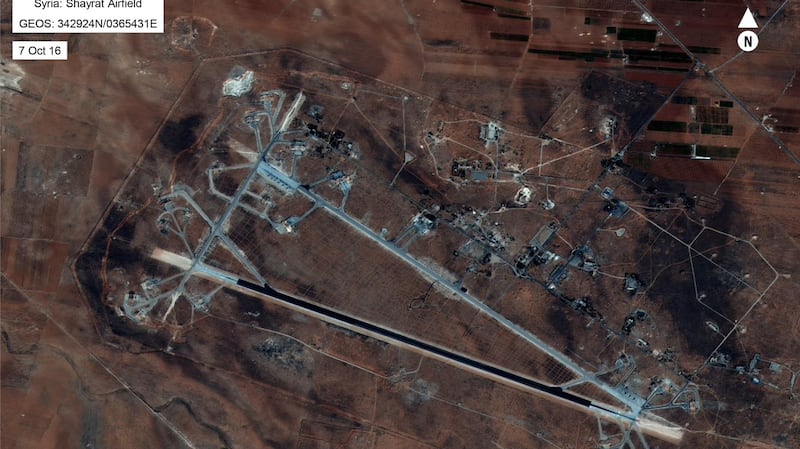
“Syria is NOT our problem,” tweeted then-citizen Donald Trump in May 2013 before he had declared as a presidential candidate. Evidently, the president who famously said during the failed Obamacare repeal discussions last month that “nobody knew that healthcare could be so complicated” is finding a similar problem with American foreign policy.
Despite repeatedly voicing his opposition to intervening in Syria, and suggesting that he would be prepared to work with Russia to bring about a solution in the country, Trump launched the first US military attack on the Syrian regime last week, putting the Washington immediately at odds with Moscow.
The move immediately threw up comparisons with Barack Obama’s failure to intervene in 2013, despite Assad crossing Obama’s famous “red line” by using chemical weapons.
However, Trump faces an infinitely more complex picture than his predecessor did more than three years ago. This is primarily due to Russia’s intervention. The surprise decision by Russia to enter the war on the side of Assad in September 2015 – a decision prompted in part by the West decision not to commit military forces on the ground – tilted the balance of the war in Assad’s favour, as the regime regained previously held rebel territory such as Aleppo.
Simultaneously the Syrian opposition became more and more fragmented, with the "moderate" rebel groups supported by American and other allies increasingly infiltrated with terrorist elements. Iran, along with Hizbullah, has also been playing an increasingly important role in shoring up Assad, providing equipment and fighters on the ground.
There is also the matter of the Trump administration's much-publicised links with Russia.
Since the launch of 59 Tomahawk missiles in the early hours of April 7th, conflicting messages have emanated from Washington. While the initial message in the wake of the strikes was that US policy had not changed and the defeat of Islamic State remained the main objective, the narrative shifted into demands for Assad to go – ironically, the very position advocated by Barack Obama.
Much of the US focus is now on probing whether Russia had any complicity in the chemical attacks and encouraging Russian president Vladimir Putin to reassess his backing of Assad. Putin's true loyalty to Assad is questionable – some analysts believe that before the Syrian strike he would have been prepared to discard the Syrian dictator if a better deal could be secured, perhaps over Ukraine and sanctions. Now many say the US has backed the Russian president into a corner by demanding that he abandons Assad.
There is also the matter of the Trump administration's much-publicised links with Russia. Despite senior figures such as Tillerson, Haley and defence secretary James Mattis publicly taking on Russia for its support for Assad, there have been few comments from the president himself.
On Wednesday at a press conference with the Nato secretary general, Trump made his first reference to Russia since the Syrian attacks. Describing relations between the US and Russia as being at an “all-time low” – which history suggests is not the case – he said he had never met Putin and said he “hoped” that Russia had not known about the chemical attacks in Syria.
With two congressional investigations and one FBI inquiry ongoing into alleged links between the Trump campaign team and Moscow, the investigation into Trump’s Russian links has more distance to run.
Afghanistan
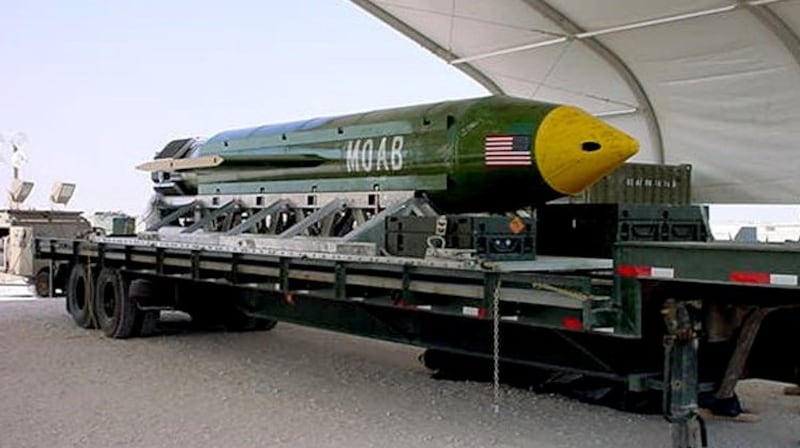
President Obama famously promised but ultimately failed to bring back all American troops from Afghanistan by the end of his presidency. The result is that there are still more than 8,000 US troops stationed in the country.
Trump’s decision on Thursday to drop a GBU-43 bomb on a system of tunnels and caves thought to be used by Islamic State has surprised the foreign policy community, and raised the prospect that the president could dispatch even more troops to the region.
In February John Nicholson, the top US commander in Afghanistan, gave a bleak update on the situation in the country, telling the Senate armed services committee that the United States would need thousands more troops to effectively train Afghan soldiers.
Iraq

Controversy over American air strikes in Iraq have also clouded the early days of Trump's presidency. A raid last month in Mosul, the northern Iraqi city at the centre of a new US-led offensive to wipe out Islamic State, killed more than 200 civilians according to reports. It is still being investigated, the US says. This week the Pentagon confirmed that 18 Syrian rebels allied with the United States were inadvertently killed in an air strike on Tuesday.
The growing number of civilian and allied killings have raised questions about whether Trump is relaxing the rules of engagement in the Middle East. Administration officials say the increase in air strikes is a result of timing, given the recent offensive in Mosul, together with a move by the president to delegate more authority to Pentagon officials. This raises concerns that Trump may be prepared to be less constrained than Obama in his fight against Islamic State. In particular, the widespread use of drones is causing alarm among many.
Iran
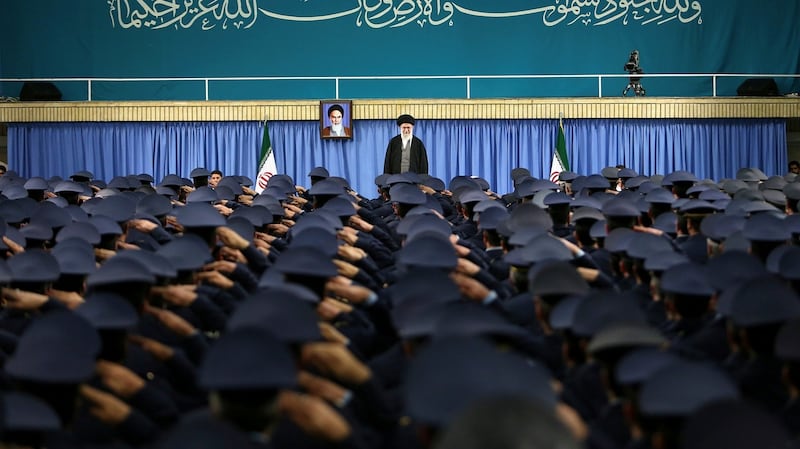
President Trump has repeatedly promised to revisit the controversial Iran nuclear deal signed last year by the US and the international community, which lifted sanctions against Iran in exchange for the Shiite state opening up its nuclear sites to inspectors and dismantling centrifuges, which the Obama administration claimed will prevent Iran from acquiring a nuclear weapon.
To date, the US president has failed to follow through on this promise to abandon the deal, but the intervention in Syria risks inflaming tensions with the Iranian leadership who have backed Assad.
Yemen
Within days of assuming the US presidency, Donald Trump ordered a raid in Yemen which had already been planned by President Obama. During the ill-fated operation by US special forces, several civilians and a US SEAL, Ryan Owens, were killed. (Trump later honoured Owens's widow during his address to Congress.)
The incident brought the US's role in the two-year-old Yemeni civil war to prominence. America is supporting its ally Saudi Arabia in the conflict following the coup by Houthi rebels, launching targeted assaults against the Iranian-backed rebel groups through controversial drone strikes as well as arming local forces.
As the bitter conflict continues, pushing the already impoverished country towards famine, there have been calls from some in Congress for the president to seek congressional approval for any further intervention.
Israel
Trump has tempered some of his more controversial language on Israel. There have been no moves to date on the mooted relocation of the US embassy from Tel Aviv to Jerusalem, and despite his apparent break with the two-state solution in comments alongside the Israeli leader Binyamin Netanyahu in February, there have been few signs of a major change in US policy.
North Korea
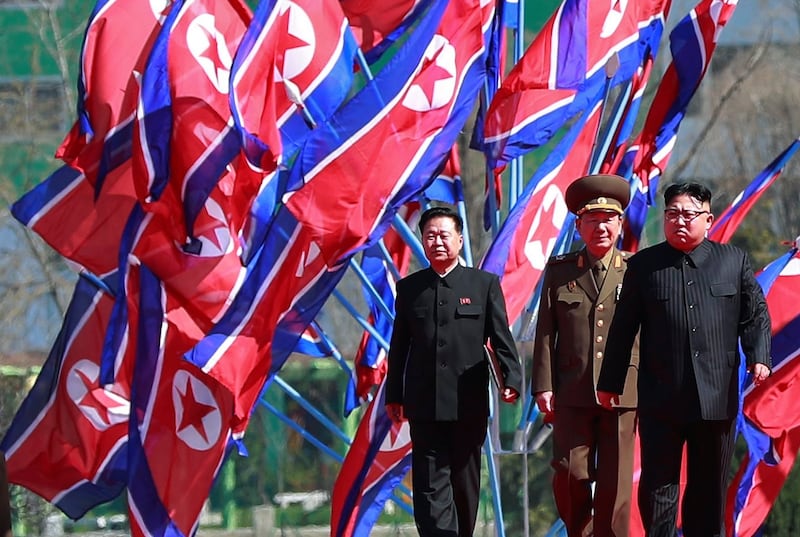
Before the Syrian air strikes on April 6th, North Korea was the most pressing foreign policy issue facing the Trump administration. Reports that Obama warned his successor that Pyongyang was the biggest single threat facing the US when he handed over the reins have pushed the issue to the top of the agenda.
In particular, there are concerns the totalitarian state is developing technology that would allow missiles to reach the US by 2020.
Trump used the highly anticipated summit with Chinese leader Xi Jinping to press China to do more to contain the North Korean threat. With China representing approximately 90 per cent of North Korea’s external trade, Washington has long argued that Beijing needs to put more pressure on its neighbour.
It appears to have worked. In an unusual move this week, an editorial in the official government mouthpiece, the Global Times, said that China "can no longer stand the continuous escalation of the North Korean nuclear issue at its doorstep", and warned that it could cut off oil supplies to the country. Trump and the Chinese leader also discussed the issue by phone.
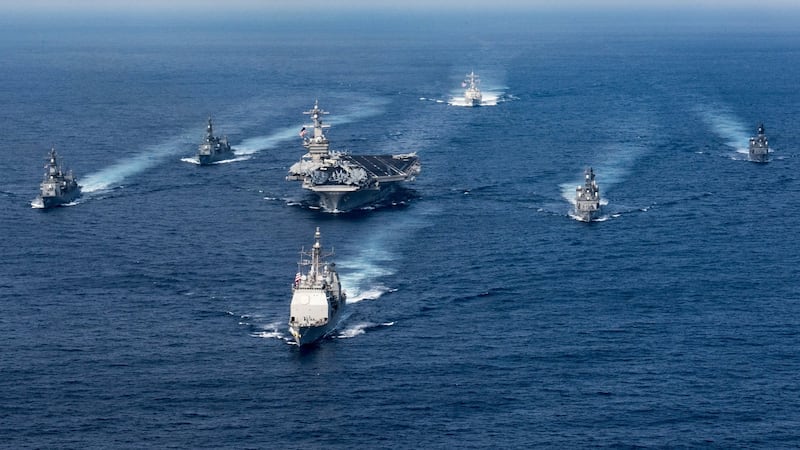
Amid signs that the Syrian missile attack was in part a warning to North Korea that he was prepared to act, Trump ordered Singapore-based US aircraft carriers into the waters near North Korea last weekend.
The provocative move was ordered amid expectations that Kim Jong-un could launch a sixth nuclear test in the coming days to mark the anniversary of the birth of the country’s founder. Reports of Japanese ships joining the US fleet may also increase pressure on North Korea.
While the possibility of a pre-emptive US strike on North Korea is not expected, the US president evidently has the communist country in his sights.
In a tweet this week he warned ominously, without giving any further detail: “North Korea is looking for trouble. If China decides to help, that would be great. If not we will solve the problem without them! U.S.A.”










